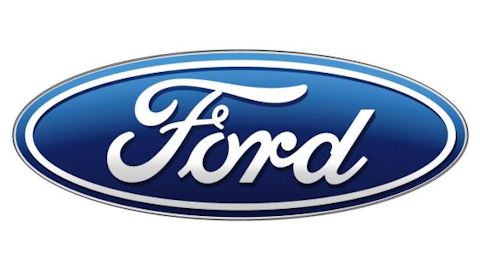 A new report suggests that the Dodge Avenger may be especially popular with subprime new-car buyers. Photo credit: Chrysler
A new report suggests that the Dodge Avenger may be especially popular with subprime new-car buyers. Photo credit: Chrysler
New-car sales have come a long way since the dark days of the economic crisis. Sales in 2009 hit lows not seen since the early 1980s — but since then, things have picked up considerably. There are a lot of good reasons for that. The economy may not be booming, but more people are back to work, and more people are feeling confident that their jobs aren’t in danger.

But lately, there have been a few signs popping up to suggest something worrisome. One of the drivers of new-car sales growth might be one of the factors that caused the economic crisis in the first place: subprime loans.
Car sales are up – and subprime lending may be, too
The worst year for sales in almost 30 years came in 2009, with only 10.4 million “light vehicles” (the industry’s term for cars, pickups, and SUVs) sold. That represented a huge drop from the 16-million plus that had been common in the years leading up to 2008’s banking crisis.
Sales aren’t back to those 16-million-plus levels yet, but they’ve rebounded nicely. Automakers sold a total of 14.5 million new cars and trucks in the U.S. last year. And they’re still improving: Most analysts expect sales to come in well over 15 million in 2013.
We know now, though, that a lot of the growth (not just in car sales) that we saw last decade was driven by subprime lending, the practice of making loans to people with poor credit ratings. Those loans were packaged into “asset-backed securities,” sort of like bonds, and sold to hungry investors.
A lot of those investments didn’t work out well, because a lot of those loans probably shouldn’t have been made in the first place. That practice dropped out of sight for a while, but lately it has started to surface once again — with car loans. That has some experts worried.
“White hot” demand for securities backed by subprime auto loans
A Reuters report earlier this month noted that securities made from subprime auto loans were “white-hot” — and just as in the economic crisis, some concerns are being raised both about the quality of the loans and about the ratings on the securities.
Some issuers are going to “deep, deep subprime,” Reuters said — borrowers with FICO credit scores around 500. And demand for these kinds of securities could be fueling a push to make more loans to subprime car buyers. That, in turn, could be nudging new-car sales upward. And there’s some evidence that some automakers are benefiting more than others.
Are some automakers getting an outsized benefit from increased subprime lending?
This past week, auto-lending hub CarFinance.com released a list of the top 10 new vehicles bought by its below-prime borrowers over the last six months. On that list: Four Chrysler products, three Kia Motors Corporation (KRX:000270) products, two Nissan Motor Co., Ltd. (ADR) (PINK:NSANY), and a Ford Motor Company (NYSE:F) — the Focus compact.
At the top of the list? The Dodge Avenger, pictured above.
CarFinance.com’s data is a limited pool, but I found it interesting, not least because Chrysler and Kia have both made huge sales gains in the U.S. since the financial crisis.
And we know that a lot of Americans saw their credit ratings take big hits during and after the worst of the downturn. An automaker that was quietly making it easier for folks with damaged credit ratings to buy new cars might be seeing outsized gains nowadays
Is that what’s going on?
Not a big deal at Ford, but it might be at Chrysler
It’s probably not what is happening at Ford Motor Company (NYSE:F). Ford Motor Company (NYSE:F)’s in-house financing arm, Ford Motor Company (NYSE:F) Credit, has been quite conservative with its lending policies in recent years – shying away, for instance, from joining the trend toward ever-longer auto loan periods. (Those super-long auto loans are a dumb way to buy a new car, by the way.)
Ford Motor Company (NYSE:F) Credit CFO Michael Seneski told analysts late last year that neither Ford nor Ford Credit was looking to greatly increase its subprime lending. About 5% to 6% of its loans are considered “high risk,” he said at the time, a reasonable number that’s in line with the industry average.
The percentage of subprime loans was a bit higher at General Motors Company (NYSE:GM), which bought subprime lender AmeriCredit back in 2010, but still reasonable.
And that’s OK. Subprime loans have been part of the new-car business for a long time. Carefully managed, they can work out well for everybody — buyers and automakers alike.
But there have been whispers for a while that Chrysler’s big sales gains – up 21% last year — have been fueled by high-volume subprime lending. Last year, credit agency Experian plc (LON:EXPN) said that 29 of every 100 new-car loans for Chrysler vehicles in the first quarter of 2012 went to buyers with credit scores below 680, which it considers subprime.
Think that could come back to haunt Detroit’s No. 3 automaker?
Chrysler owner Fiat SpA (BIT:F) has been talking lately about a Chrysler IPO, which would return the Detroit automaker’s stock to the public exchanges. If Chrysler does decide to go public once again, expect this issue to get a lot of attention.
The article Are Subprime Loans Fueling Auto Sales? originally appeared on Fool.com is written by John Rosevear.
Fool contributor John Rosevear owns shares of Ford and General Motors. Follow him on Twitter at @jrosevear. The Motley Fool recommends Ford and General Motors and owns shares of Ford.
Copyright © 1995 – 2013 The Motley Fool, LLC. All rights reserved. The Motley Fool has a disclosure policy.




